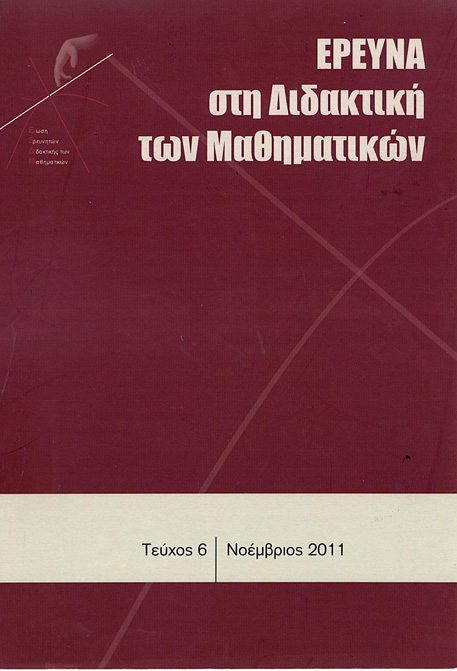Μέτρηση εμβαδού, από νήπια, μέσω της κάλυψης επιφάνειας με χρήση βοηθητικών μέσων

Περίληψη
Βασιζόμενοι στο ερμηνευτικό πλαίσιο του Cobb (2007) για τη μάθηση των μαθηματικών και με την υπόθεση ότι αν σχεδιαστούν και υλοποιηθούν δραστηριότητες που έχουν νόημα για τα παιδιά με τέτοιο τρόπο ώστε να τα εμπλέξουν σε προβληματισμό, θα έχουν την ευκαιρία να αναπτύξουν προσωπικούς συλλογισμούς οι οποίοι μέσα από την κοινωνική αλληλεπίδραση—μεταξύ τους και με την ερευνήτρια—θα ανασχηματιστούν συμβάλλοντας στη δημιουργία μιας διαφορετικής πρακτικής της τάξης. Στο άρθρο αυτό περιγράφεται η παρέμβαση που πραγματοποιήθηκε, σε μια τάξη νηπιαγωγείου, για τη μέτρηση εμβαδού, από τα νήπια, μέσω της κάλυψης επιφάνειας, με χρήση βοηθητικών μέσων οικείων στα παιδιά. Από την καταγραφή του συλλογισμού των νηπίων, φάνηκε ότι είχαν την ικανότητα να καλύψουν μια επιφάνεια με ‘διακριτό’ υλικό και να το καταμετρήσουν, καθώς και ότι μπόρεσαν να αντιληφθούν την αντίστροφη σχέση που χαρακτήριζε το μέγεθος της μονάδας μέτρησης και το πλήθος των μονάδων που χρησιμοποιήθηκαν στη συγκεκριμένη μέτρηση. Επίσης, καταγράφηκαν οι στρατηγικές των νηπίων για την κάλυψη μιας επιφάνειας με ‘συνεχές’ υλικό.
Λεπτομέρειες άρθρου
- Πώς να δημιουργήσετε Αναφορές
-
Σκουμπουρδή (Crisanthi Skoumbourdi) Χ., & Παπαϊωάννου-Στραβολαίμου (Dimitra Papaioannou- Stravolaimou) Δ. (2017). Μέτρηση εμβαδού, από νήπια, μέσω της κάλυψης επιφάνειας με χρήση βοηθητικών μέσων. Έρευνα στη Διδακτική των Μαθηματικών, (6), 39–59. https://doi.org/10.12681/enedim.15034
- Ενότητα
- Άρθρα

Αυτή η εργασία είναι αδειοδοτημένη υπό το CC Αναφορά Δημιουργού 4.0.
Οι συγγραφείς των άρθρων που δημοσιεύονται στο περιοδικό διατηρούν τα δικαιώματα πνευματικής ιδιοκτησίας επί των άρθρων τους, δίνοντας στο περιοδικό το δικαίωμα της πρώτης δημοσίευσης. Άρθρα που δημοσιεύονται στο περιοδικό διατίθενται με άδεια Creative Commons BY και σύμφωνα με την άδεια μπορούν να χρησιμοποιούνται ελεύθερα, με αναφορά στο/στη συγγραφέα και στην πρώτη δημοσίευση.

